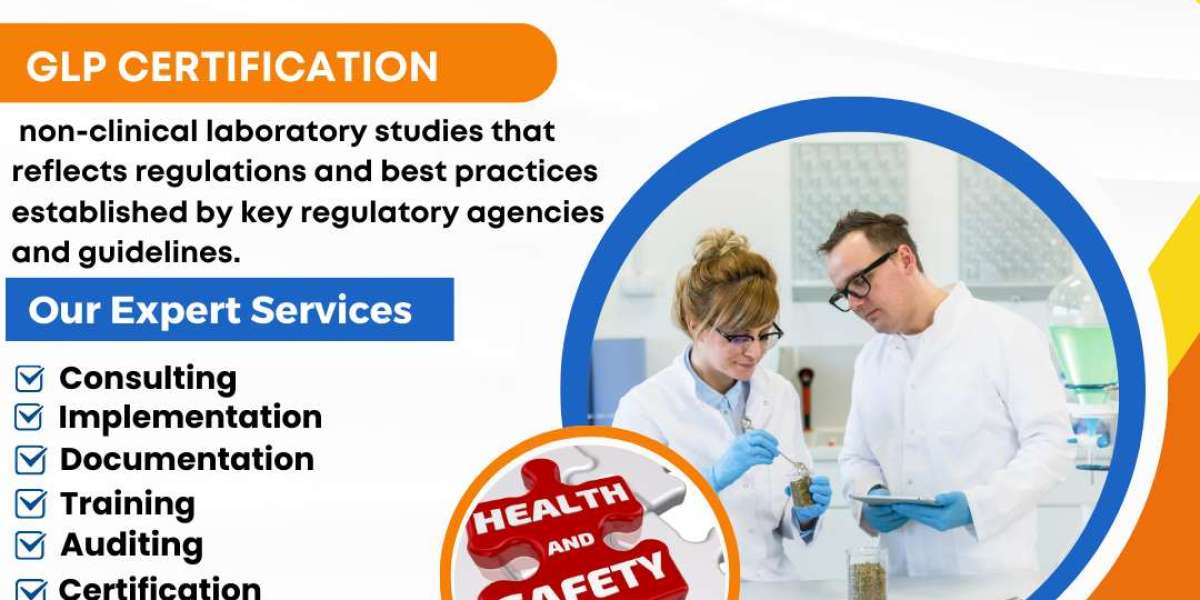In the United States, scientific data plays a central role in developing new medicines, chemicals, and consumer products. From pharmaceutical trials to environmental testing, the credibility of laboratory results directly influences public health, safety, and environmental protection. To maintain high standards and ensure the accuracy and integrity of data, the concept of Good Laboratory Practice (GLP) has been adopted globally. GLP in USA has become a key indicator of a laboratory's commitment to quality, consistency, and regulatory compliance. Whether you operate in pharmaceuticals, agrochemicals, biotechnology, or food safety, achieving GLP compliance is vital for building trust with regulators, clients, and research stakeholders.
What is GLP?
Good Laboratory Practice (GLP) refers to a set of principles intended to ensure the quality, integrity, and reliability of non-clinical laboratory studies. Originating in the 1970s after a series of fraudulent laboratory practices, GLP was formalized to prevent data manipulation and improve the accountability of laboratory testing. In the United States, GLP regulations are enforced by the U.S. Food and Drug Administration (FDA) under 21 CFR Part 58 and the Environmental Protection Agency (EPA) under 40 CFR Part 160 and 792. These regulations apply to non-clinical safety testing for:
- Pharmaceuticals
- Pesticides and chemicals
- Food additives
- Cosmetics
- Veterinary products
- Medical devices
GLP is not about how to conduct science—it’s about how to document and control laboratory processes to ensure that test results are trustworthy, reproducible, and acceptable to regulatory agencies.
What is GLP Certification?
GLP Certification Consultants in USA is a third-party validation that a laboratory adheres to GLP principles and complies with applicable regulatory standards. Although the FDA and EPA do not issue official "GLP certificates," many laboratories voluntarily seek certification through accredited organizations or government inspections to demonstrate their compliance.
GLP certification generally involves:
- Independent audits of laboratory practices
- Review of documentation and quality systems
- Evaluation of data handling and reporting protocols
- Assessment of facility and equipment maintenance
- Inspection of staff qualifications and training
Certification ensures that studies submitted for regulatory approval are based on reliable, traceable, and ethically conducted experiments.
Why GLP Certification is Important in the USA
GLP certification has become a cornerstone of credibility in laboratory research, especially in industries where human and environmental safety is at stake.
1. Supports Regulatory Submissions
Whether submitting data to the FDA, EPA, or international bodies like the OECD, GLP-compliant studies are often required. Certification ensures data will be accepted without regulatory objections.
2. Ensures Data Integrity and Traceability
GLP demands meticulous documentation, enabling every step of a study to be traced and verified—protecting against fraud and data manipulation.
3. Builds Client and Stakeholder Trust
Clients, sponsors, and CROs (contract research organizations) prefer working with GLP-certified labs because it guarantees that results are reproducible and credible.
4. Enhances Laboratory Efficiency
Implementing GLP practices encourages better workflow management, staff accountability, and efficient resource utilization.
5. Strengthens Global Market Access
GLP Registration in USA is based on international guidelines (e.g., OECD GLP) helps U.S. laboratories serve clients in Europe, Asia, and other regulatory markets.
Who Should Pursue GLP Certification?
GLP certification is ideal for laboratories involved in:
- Toxicology testing
- Environmental studies
- Pharmacokinetic and pharmacodynamic studies
- Analytical chemistry
- Food and chemical safety testing
- Biotechnology R&D
- Medical device validation
Whether you're a small research lab or a large-scale CRO, demonstrating GLP compliance can open doors to more contracts and regulatory approvals.
Key Components of GLP Compliance
To obtain GLP certification, laboratories must demonstrate control over several operational areas:
- Organizational Structure: Defined roles, responsibilities, and independence of Quality Assurance (QA) personnel.
- Standard Operating Procedures (SOPs): Written instructions for all routine tasks, from sample collection to data recording.
- Facility and Equipment: Clean, organized, and well-maintained facilities with validated equipment.
- Data Management: Secure, traceable, and verifiable record-keeping, including raw data, reports, and archiving.
- Personnel Training: Documentation that all staff are trained and competent in their roles.
- Quality Assurance Program: Ongoing audits and inspections to ensure continuous adherence to GLP principles.
Steps to Achieve GLP Certification in the USA
- Gap Analysis and Initial Assessment
Evaluate your current laboratory operations against GLP requirements and identify deficiencies. - Develop and Implement SOPs
Write detailed SOPs for all laboratory functions and ensure they are regularly reviewed and updated. - Upgrade Documentation Systems
Ensure all data recording, storage, and reporting methods meet GLP expectations for transparency and reproducibility. - Train Personnel
Train all staff on GLP principles, SOPs, and quality responsibilities. Document all training activities. - Conduct Internal Audits
Perform mock audits to identify areas for improvement and prepare for external assessments. - Engage a Certifying Body or Prepare for Inspection
Contact a recognized third-party certifier or prepare for a regulatory inspection by FDA or EPA (if applicable). - Continuous Improvement
Maintain GLP compliance through regular audits, corrective actions, and staff training updates.
Final Thoughts
In a scientific and regulatory landscape where data accuracy is non-negotiable, GLP Implementation in USA is more than a compliance checkbox—it’s a mark of integrity, transparency, and excellence. For laboratories engaged in non-clinical studies, GLP certification builds trust with regulators, clients, and the public by proving that your data can be relied upon in critical decision-making.



